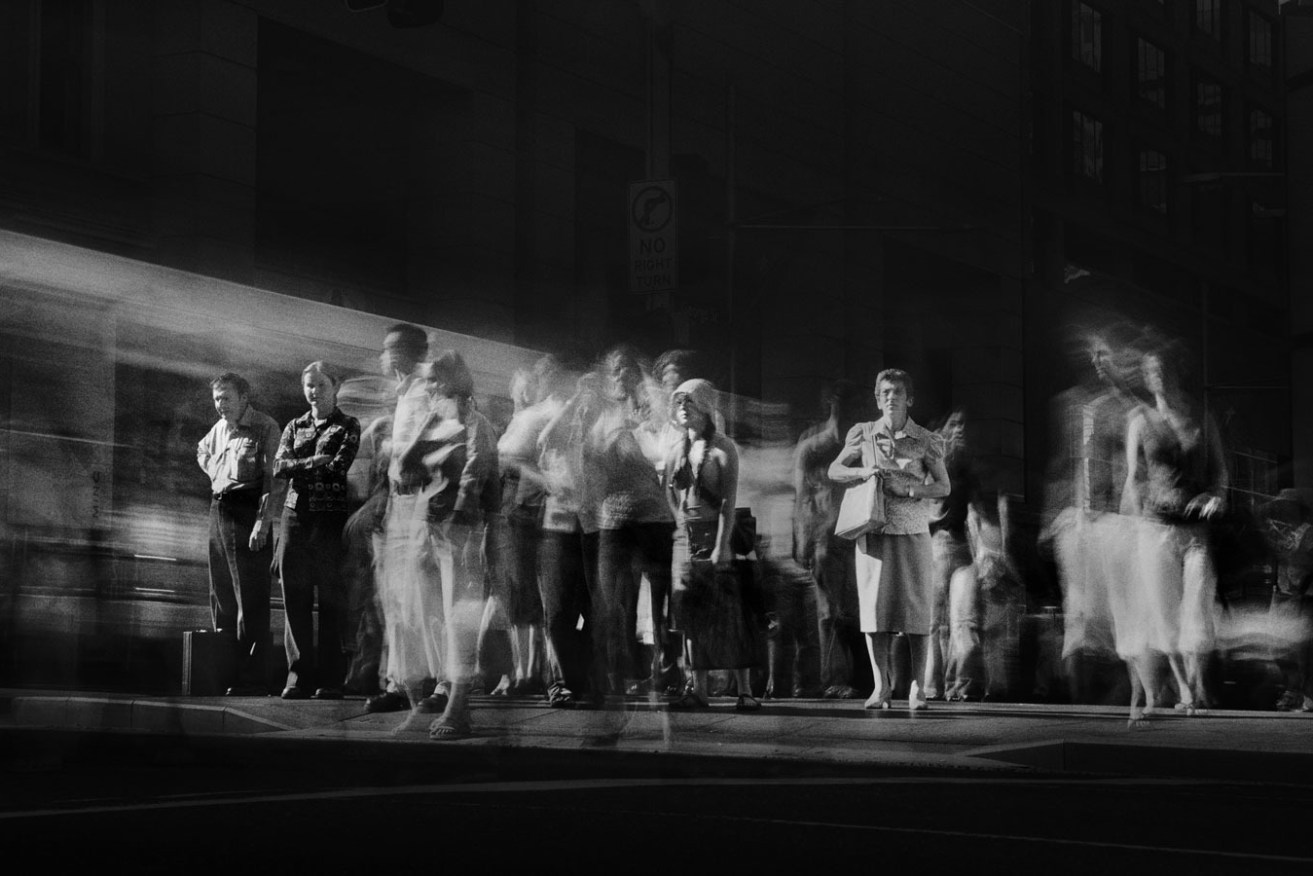Trent Parke’s monument to humankind
Celebrated photographer Trent Parke’s new retrospective exhibition is like a time capsule, offering a unique and fascinating look at everyday life through his lens.


Trent Parke, 'Untitled #118', Sydney, New South Wales, 2002, from 'Monument', silver gelatin print, 116 x 172cm, edition of 10.
Trent Parke: Monument
Hugo Michell Gallery
For the last 25 years, Trent Parke has been experimenting with photography, pushing the boundaries of the medium to create unique snapshots of everyday life. Monument is a retrospective exhibition that revisits his most iconic black-and-white street photography in the form of a photography book, large-format prints and single-channel video work.
The exhibition, showing at Hugo Michell Gallery as part of this year’s SALA Festival, is a record of what Parke has seen in his lifetime – his monument to humankind.
The artist began his career as a press photo-journalist and in 2007 he became the first Australian to be admitted as a member of the Magnum Photo Agency. For Parke, photography has always been about solving the problems of life; a way to answer questions.
The genesis for Monument began 25 years ago when he moved to Sydney from a small country town. Fascinated with the rush hour and masses of people, Parke first noticed the unique Sydney light, which prompted him to capture life as it was. Since then, he has continued to follow the light.
By day, Parke documented the city commuters moving en masse. At night, he would watch the eclipse of moths constantly circling the lights of the Sydney Harbour Bridge.
He began circling the city, and like the moths following the light, he followed the sun as it moved from street corner to street corner. He started to slow down shutter speeds and began experimenting with light.

Trent Parke, Monument, at Hugo Michell Gallery. Photo: Sam Roberts / supplied
Parke’s practice involves shooting many rolls of film to get the perfect shot where the light, time and movement all fall into place. The images taken during this process have been filed away in the archives. The negatives were often over-exposed or under-exposed, and in the early days of his career, using a small scanner, it was hard to do anything with them. Thanks to developments in technology, he has been able to revisit these images using a high-end Flextight scanner.
Monument is inspired by NASA’s Golden Record – a 12-inch, gold-plated copper disk launched in 1977 as a time capsule. The disk contains sounds and images selected to portray life on Earth. This idea fascinated Parke. From all the images available in the world, how could they select 116 to show humankind to another species?
Delving back into the archives and reflecting on past works led Parke to consider what he would include in his own time capsule. Listening to Max Richter’s “Never Goodbye” from the album Hostiles, it became clear in his mind and Parke selected, from thousands of negatives, the images that would make up his Monument. Presented as a single-channel video work, these images – accompanied by Richter’s score – provide a unique look at everyday life.

Trent Parke’s Monument centres around a photographic book of the same title, laid out on the walls of the Hugo Michell Gallery. Photo: Sam Roberts / supplied
The exhibition centres around a photographic book of the same title published by Stanley/Barker. Creating the photo book provided the greatest challenge for Parke. Each image captures a moment in time, making it challenging to select and arrange them in a way that tells a completely different story. Audiences can view this landmark publication laid out on the walls of the gallery and follow Parke’s narrative to see the universe through his lens.
Works from the early experimental period in Sydney appear in Monument as large silver gelatine prints. For example, the image of a moving bus taken on a busy Sydney street (pictured top) features commuters standing on one side of the road as their shadows hit the side of the bus. The bus is moving but their shadows are still. This is what fascinates Parke, the things that photography can capture but the mind’s eye can’t.
Other prints in the exhibition are drawn from the archives of The Camera is God series in 2013, when Parke photographed an Adelaide pedestrian crossing at the same time of day, every day for nearly a year. These images have been blown up from a very tiny point on the negative to extreme proportions so all that is left is grain and matter. The resulting image reflects the idea that humans are made up of particles.
Monument celebrates Parke’s impressive photographic career, particularly his black and white street photography. The exhibition reflects the transience of life and gives the audience a glimpse into his world as he presents a record of what he has seen in his lifetime; his portrayal of life on this planet.
Trent Parke: Monument is showing at Hugo Michell Gallery at Beulah Park until August 26 as part of the 2023 SALA Festival. Read more SALA articles here.

Trent Parke, Monument, at Hugo Michell Gallery. Photo: Sam Roberts / supplied
This article is republished from InReview under a Creative Commons licence. Read the original article.
InReview is an open access, non-profit arts and culture journalism project. Readers can support our work with a donation.
![]()




